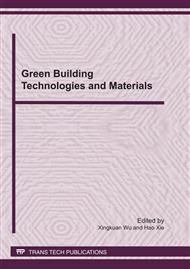p.147
p.152
p.159
p.164
p.170
p.175
p.179
p.185
p.192
Continuum Method and Effect Analysis of Energy Dissipation System for High-Rise Shear-Wall Structure
Abstract:
In this paper, the continuum method is applied in the energy dissipation systems for high-rise shear-wall structure of double-limb in order to set up the differential equations of the limbs and the method about solving the equations according to mode superposition principle of linear system is discussed. The fundamental natural period of a example is calculated by self-compiled program with visual Fortran language and currency program SAP2000 in order to check the applicability, reliability and effect of the continuum method to the energy dissipation system for high-rise shear-wall structure.
Info:
Periodical:
Pages:
170-174
Citation:
Online since:
April 2011
Authors:
Price:
Сopyright:
© 2011 Trans Tech Publications Ltd. All Rights Reserved
Share:
Citation:


